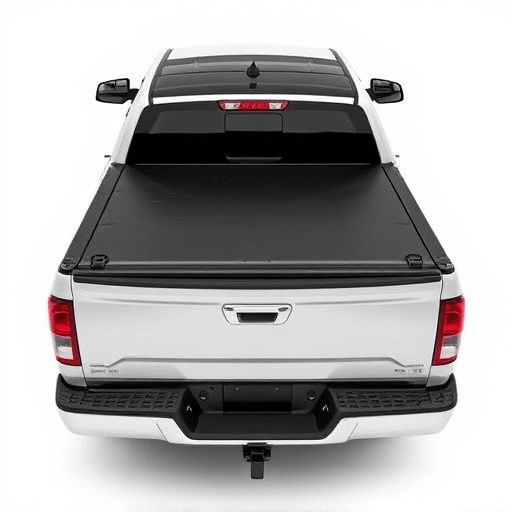Suspension Arm Bushings: Enhancing Vehicle Safety and Handling
Suspension arm bushings are critical components that enhance vehicle handling, safety, and comfort b…….
In the realm of automotive engineering, suspension systems play a pivotal role in ensuring vehicle stability, comfort, and safety. At the heart of these sophisticated mechanisms are suspension arm bushings—a fundamental component that deserves closer scrutiny. This article aims to provide an insightful exploration of suspension arm bushings, delving into their structure, global impact, economic significance, technological innovations, regulatory landscape, challenges, successful implementations, and a glimpse into their promising future. By the end, readers will grasp the critical role these bushings play in shaping modern transportation.
Definition: Suspension arm bushings, also known as suspension bearings or control arm bushings, are mechanical components found in vehicle suspension systems. They serve as the point of connection between the control arms (or A-arms) and the steering knuckles, allowing for smooth articulation and optimal wheel movement.
Core Components:
Historical Context: The concept of suspension arm bushings dates back to the early 20th century when automotive engineers sought ways to improve ride quality and handling. Early designs used solid metal components, but the introduction of rubber and polymer materials revolutionized bushing technology, offering enhanced flexibility and durability. Over time, advancements in material science and manufacturing processes have led to the development of specialized bushings tailored for specific vehicle requirements.
Significance: These bushings are critical for several reasons:
The global market for suspension arm bushings exhibits a robust demand driven by several factors:
| Region | Market Dynamics | Key Trends |
|---|---|---|
| North America | High vehicle ownership rates and a preference for luxury and sport utility vehicles (SUVs) drive the need for advanced suspension systems, including bushings. | Increasing adoption of high-performance bushings in performance cars. |
| Europe | Strict emissions and safety regulations encourage the development of lightweight and durable suspension components. | Growing focus on electric vehicle (EV) suspension systems requiring specialized bushings. |
| Asia Pacific | Rapid urbanization and rising disposable incomes lead to a surge in two-wheeler and passenger car sales. | Cost-effective bushing solutions for mass-market vehicles are in high demand. |
| Latin America | A growing middle class and improving infrastructure contribute to increased vehicle penetration. | Standardization of suspension bushings across various vehicle segments. |
Global supply chains have evolved to cater to these regional demands, with manufacturers adopting localized production strategies to reduce transportation costs and ensure timely deliveries.
The economic landscape surrounding suspension arm bushings is intricate, involving various stakeholders:
Market Dynamics:
Innovation in suspension arm bushings has led to remarkable improvements in vehicle performance and ride quality:
Regulatory bodies worldwide play a crucial role in governing the automotive industry, including suspension arm bushings:
In Europe, the European Union’s (EU) Automotive Parts Regulation requires thorough testing and traceability for all automotive components, including suspension bushings. Similar standards are emerging in other regions to ensure vehicle safety and quality.
Despite their widespread use, suspension arm bushings face several challenges:
Proposed Solutions:
Company: German luxury car manufacturer, BMW.
Challenge: Improve ride quality and handling in their high-performance SUVs while maintaining precision steering.
Solution: BMW collaborated with a specialized bushing manufacturer to develop custom variable rate bushings for their X5 and X7 models. These bushings adapt to different driving modes, offering a balance between comfort and sportiness.
Outcome: The new bushings received excellent reviews from critics and owners alike, resulting in increased customer satisfaction and enhanced brand reputation.
Company: Japanese automotive parts supplier, Tokai Rubber.
Goal: Provide a durable and affordable suspension arm bushing solution for budget-conscious car buyers.
Approach: Tokai Rubber developed a new polymer compound with enhanced wear resistance and temperature stability. They optimized their manufacturing process to reduce costs without compromising quality.
Impact: This cost-effective bushing was successfully adopted by several major automakers for their entry-level models, improving ride comfort while maintaining low production costs.
The future of suspension arm bushings appears promising, shaped by technological advancements and evolving market demands:
Suspension arm bushings, often overlooked components, are critical in enhancing the performance, safety, and comfort of modern vehicles. This article has provided a comprehensive overview, highlighting their historical development, global impact, economic considerations, technological advancements, regulatory landscape, challenges, successful implementations, and promising future prospects.
As the automotive industry continues to evolve, suspension bushings will remain a key element in achieving optimal vehicle dynamics. The ongoing pursuit of innovation, sustainability, and cost-effectiveness will shape the direction of this vital component, ultimately contributing to safer and more enjoyable driving experiences worldwide.
Q: How often should I replace suspension arm bushings?
A: The frequency depends on various factors, including vehicle make, model, driving conditions, and maintenance history. As a general rule, inspect bushings every 30,000-50,000 miles (or as recommended by the vehicle manufacturer) and replace them if they show signs of wear or damage.
Q: Can I install different types of suspension arm bushings on my vehicle?
A: Yes, but it’s crucial to choose bushings compatible with your vehicle’s make and model. Using bushings from different manufacturers or those not designed for your specific vehicle may lead to poor performance, safety issues, or premature wear.
Q: Are there any environmental benefits to using advanced suspension arm bushing materials?
A: Absolutely! Newer materials, such as enhanced polymer compounds and lightweight alternatives, contribute to reduced vehicle weight, lower fuel consumption, and minimized environmental impact during production and disposal.
Q: How do I know if my vehicle needs new suspension arm bushings?
A: Signs of worn or damaged bushings include increased body roll while turning, unusual noise (banging or clunking), and a rough ride quality. If you notice any of these issues, consult a qualified mechanic to inspect and replace the bushings as needed.

Suspension arm bushings are critical components that enhance vehicle handling, safety, and comfort b…….